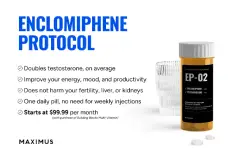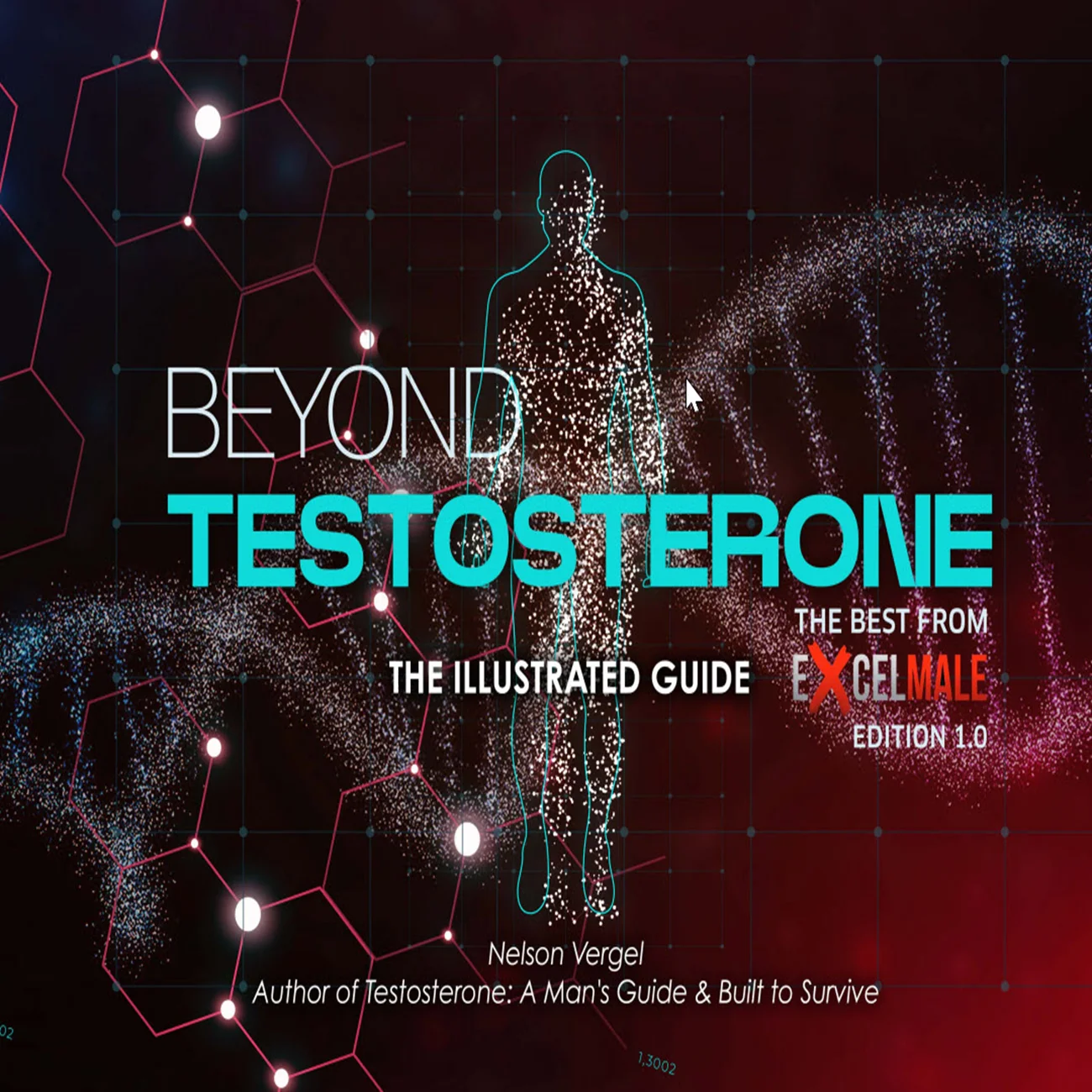madman
Super Moderator
* With the reputation of being untreatable, CVLs are thought to cause more than half4 of the 30% resistance-rate to PDE-5 Is,21 and 80% of resistance to self-injections.4,22 CVLs may affect up to 4.4 million men in the USA, deprived of a satisfactory sexual life, including 1–2 percent of men under 30.23
* Many facts demonstrate the severity of CVL personal consequences and the necessity to improve standards of care in these patients. Two-thirds of our patients had insufficient rigidity for penetration despite high intracavernosal pharmacological stimulation equivalent to TrimixⓇ, all had an invaliding erectile instability. Many of the 53.2% primary ED patients did not have sexual intercourses with partner beyond a first failed attempt. Mean access time to treatment was as long as 11 years. Nearly all patients had been told earlier that their ED was psychogenic, without etiologic diagnosis attempt. One patient committed suicide, after he was wrongly told his surgery was a failure, although end-of-procedure cavernosography had shown a complete occlusion of all leakages and ICC pharmacological stimulation had resulted in a 4/4 EHS.
* Contribution of CVL to ED has been questioned. Any incomplete cavernosa filling by blood results in erection failure and physiologic blood efflux to the general circulation through veins, often causing misinterpretations of CVL pathophysiology and misdiagnosis.15 This is the case in arterial insufficiency or stress during PC-PDS. Accurate CVL diagnosis requires high-level pharmacological stimulation to maximize blood influx and avoid PC-PDS false positives due to stress.15,16 To assign ED to CVL, other organic causes must be ruled out.
* Surgery was not proposed to 38.1% CVL patients in our center (data not shown), mostly due to coexisting causes of ED and the likelihood of limited functional benefit, even after effective CVL treatment. Nevertheless, 40% of operated patients had mild arterial, neurologic, or hormonal abnormalities. Even so, the indication for CVL appeared appropriate, as their functional outcomes were comparable to other's.
Highlights
• Hybrid surgery treats 171 men with drug-resistant erectile dysfunction.
• PC-EHS improved from 2.56 to 3.40; IIEF-5 from 10.7 to 15.9 (P < 0.0001).
• Of the patients, 80.7% had improved natural erections after treatment.
• Imaging confirmed leaks preoperative and verified success postoperative.
• Low complication rate; long-term results remained stable.
Abstract
Background
Assess results of simultaneous ligation and embolization for cavernovenous leakage (CVL) in patients with erectile dysfunction (ED) resistant to Phosphodiesterase-5 inhibitors.
Methods
Data from consecutive patients with ED operated-on for CVL, were collected prospectively. CVLs were diagnosed by Pharmacologically Challenged Penile Duplex Sonography (PC-PDS) and computed tomography cavernosography. Patients underwent open surgical ligation and endovascular embolization during the same procedure. The main exclusion criterium was any other untreated organic cause of ED, and for embolization high risk of thromboembolic complication. Primary endpoints were (1) 3-month Pharmacologically Challenged Erection Hardness Score (PC-EHS) and (2) end-of-follow-up clinical EHS. Secondary endpoints were (1) PC-PDS parameters and (2) International Index of Erectile Function, domain 5 score (IIEF-5). Statistical analysis used paired Student's t-test, t-test of means and Chi-square test.
Results
Of the patients, 171 underwent treatment. Mean follow-up was 22.88 ± 19.71 months. Twenty-four patients (14.0%) underwent vascular reoperation for persisting ED and CVL at 3 months. Mean PC-EHS increased from 2.56 ±0 .66 to 3.40 ± 0.56 (P < 0.0001). The proportion of patients with a PC-EHS<3 dropped from 64.9 to 11.2% (Chi-square: P < 0.001). All PC-PDS parameters had decreased significantly. At the end-of-follow-up, mean clinical EHS increased significantly during morning erections (from 0.95 ± 1.24 to 2.12 ± 1.37), masturbation (from 2.11 ± 0.67 to 3.04 ± 0.75), sexual intercourses (from 1.94 ± 0.67 to 3.31 ± 0.75) (P < 0.0001 for all criteria), and mean IIEF-5 score from 10.68 ± 5.11 to 15.89 ± 5.80 (P < 0.0001). Nine (5.29%) experienced a decreased PC-EHS. End-of-follow-up erection improvement rate was 80.7%.
Conclusion
CVL can be treated effectively with combined open and endovascular techniques. Accurate preoperative assessment and 3-month hemodynamic evaluation are essential.
Discussion
With the reputation of being untreatable, CVLs are thought to cause more than half4 of the 30% resistance-rate to PDE-5 Is,21 and 80% of resistance to self-injections.4,22 CVLs may affect up to 4.4 million men in the USA, deprived of a satisfactory sexual life, including 1–2 percent of men under 30.23 Many facts demonstrate the severity of CVL personal consequences and the necessity to improve standards of care in these patients. Two-thirds of our patients had insufficient rigidity for penetration despite high intracavernosal pharmacological stimulation equivalent to TrimixⓇ, all had an invaliding erectile instability. Many of the 53.2% primary ED patients did not have sexual intercourses with partner beyond a first failed attempt. Mean access time to treatment was as long as 11 years. Nearly all patients had been told earlier that their ED was psychogenic, without etiologic diagnosis attempt. One patient committed suicide, after he was wrongly told his surgery was a failure, although end-of-procedure cavernosography had shown a complete occlusion of all leakages and ICC pharmacological stimulation had resulted in a 4/4 EHS.
Contribution of CVL to ED has been questioned. Any incomplete cavernosa filling by blood results in erection failure and physiologic blood efflux to the general circulation through veins, often causing misinterpretations of CVL pathophysiology and misdiagnosis.15 This is the case in arterial insufficiency or stress during PC-PDS. Accurate CVL diagnosis requires high-level pharmacological stimulation to maximize blood influx and avoid PC-PDS false positives due to stress.15,16 To assign ED to CVL, other organic causes must be ruled out. Surgery was not proposed to 38.1% CVL patients in our center (data not shown), mostly due to coexisting causes of ED and the likelihood of limited functional benefit, even after effective CVL treatment. Nevertheless, 40% of operated patients had mild arterial, neurologic, or hormonal abnormalities. Even so, the indication for CVL appeared appropriate, as their functional outcomes were comparable to other's. Incomplete ED workup may have distorted our understanding of CVL pathophysiology and contributed to failures of instrumental treatments reported earlier.24 Difficulties for treating CVL are illustrated by the multiplicity of proposed techniques, and the diversity of techniques deployed in our approach.25–29The challenges of treating CVL are illustrated by the multiplicity of techniques described in the literature and by the diversity of procedures employed in our series.25–29 Our guiding principle was to address all identified leaks. Surgery alone does not achieve this goal.11,30 Embolization is appealing as a less invasive option.31,32 However, to our knowledge, embolization of external pudendal and other superficial leaks has been scarcely reported, in contrast to DDV embolization. This may reflect the typically multibranch anatomy of the external pudendal and superficial drainage, which makes catheter-based occlusion more complex than surgical ligation. We successfully used Onyx embolization instead of surgery when superficial CVL was confined to a solitary vein draining to the external iliac vein—a less frequent pattern. A 2019 meta-analysis (n = 212)33 and a recent DDV-focused series (n = 50)34 reported a 59.8% success rate and an 82% 6-week improvement after embolization, respectively. Most embolization studies, however, used prostaglandin E1 alone for pharmacological stimulation during patient selection.34 This approach yields up to 50% false positives.15,16,35 These studies also relied on largely subjective outcome measures despite the known influence of performance anxiety, introducing a high risk of interpretation bias. A recent embolization publication explicitly acknowledged potential placebo effects.34 To our knowledge, pharmacological EHS combined with penile duplex sonography before and after treatment is the only minimally invasive strategy that mitigates placebo-related bias. At this stage in the revival of CVL treatments, all methods should be rigorously evaluated. We recommend that postoperative erection assessment mirror preprocedural objective testing. Whether percutaneous embolization can reliably replace surgical ligation for external pudendal and other superficial leaks remains to be demonstrated using selection methods avoiding false positives, and robust outcome measures.
Based on preoperative analysis of CVL topography, only a minority of our patients were treated with 1 of the 2 techniques alone. Only 5.3% of our cases could be treated by embolization only, a figure that may explain why embolization alone may carries poor results.
Despite our attempted diagnosis and treatment exhaustivity, 12.9% of surgeries failed because of persisting CVLs at 3-month PC-PDS, a figure accounting for two-thirds of failures. All 14% vascular reinterventions were motivated by persisting CVLs and ED. Altogether, uncontrolled CVLs account for 26.9% of primary surgery failures. This figure had never been reported earlier, because PC-PDS had not been used for quality control. Three-month PC-PDS with venous leak imaging and PC-EHS should be recommended for the improvement of all CVL treatments, as an objective control tool.
It has been proposed that CVLs could not be treated because the venous system is redundant and proliferates. We are currently analyzing whether persisting CVLs were omitted by surgery, or are new leaks. In any case, the stability or slight improvement of erections over time in our series suggests that new CVLs exceptionally develop after successful procedures. This is supported by an earlier report from G. Shu et al.12 and by the fact that CVL patterns are limited.18 We propose that CVLs are caused by functional alterations of veins and their locking systems, acquired during penile ontogenesis (primary CVLs) or aging (secondary CVLs). Their patterns belong either to the normal pattern of veins draining the penis, or form aberrant networks as observed oftentimes in primary ED (E. Allaire, personal observation). However, we did not document vein or CVL proliferating after surgery, except in rare patients.
Our study presents some limitations. It is monocentric. Reproducibility needs to be assessed. Remnant CVLs after surgery remains a concern and require procedure refinements. Although we were able to document a 3-year stability, further assessment of durability is awaited. Lastly, results emphasize that CVL hybrid surgery bears risks, although usually mild.
In conclusion, our results in 171 patients support the idea that CVLs can be treated in order to improve natural erections, a patient request. Preoperative identification of ED mechanisms, CVL pattern assessment, combined surgery associating open and endovascular techniques and rigorous postoperative evaluation may be considered by other centers for reproducibility validation.
* Many facts demonstrate the severity of CVL personal consequences and the necessity to improve standards of care in these patients. Two-thirds of our patients had insufficient rigidity for penetration despite high intracavernosal pharmacological stimulation equivalent to TrimixⓇ, all had an invaliding erectile instability. Many of the 53.2% primary ED patients did not have sexual intercourses with partner beyond a first failed attempt. Mean access time to treatment was as long as 11 years. Nearly all patients had been told earlier that their ED was psychogenic, without etiologic diagnosis attempt. One patient committed suicide, after he was wrongly told his surgery was a failure, although end-of-procedure cavernosography had shown a complete occlusion of all leakages and ICC pharmacological stimulation had resulted in a 4/4 EHS.
* Contribution of CVL to ED has been questioned. Any incomplete cavernosa filling by blood results in erection failure and physiologic blood efflux to the general circulation through veins, often causing misinterpretations of CVL pathophysiology and misdiagnosis.15 This is the case in arterial insufficiency or stress during PC-PDS. Accurate CVL diagnosis requires high-level pharmacological stimulation to maximize blood influx and avoid PC-PDS false positives due to stress.15,16 To assign ED to CVL, other organic causes must be ruled out.
* Surgery was not proposed to 38.1% CVL patients in our center (data not shown), mostly due to coexisting causes of ED and the likelihood of limited functional benefit, even after effective CVL treatment. Nevertheless, 40% of operated patients had mild arterial, neurologic, or hormonal abnormalities. Even so, the indication for CVL appeared appropriate, as their functional outcomes were comparable to other's.
Highlights
• Hybrid surgery treats 171 men with drug-resistant erectile dysfunction.
• PC-EHS improved from 2.56 to 3.40; IIEF-5 from 10.7 to 15.9 (P < 0.0001).
• Of the patients, 80.7% had improved natural erections after treatment.
• Imaging confirmed leaks preoperative and verified success postoperative.
• Low complication rate; long-term results remained stable.
Abstract
Background
Assess results of simultaneous ligation and embolization for cavernovenous leakage (CVL) in patients with erectile dysfunction (ED) resistant to Phosphodiesterase-5 inhibitors.
Methods
Data from consecutive patients with ED operated-on for CVL, were collected prospectively. CVLs were diagnosed by Pharmacologically Challenged Penile Duplex Sonography (PC-PDS) and computed tomography cavernosography. Patients underwent open surgical ligation and endovascular embolization during the same procedure. The main exclusion criterium was any other untreated organic cause of ED, and for embolization high risk of thromboembolic complication. Primary endpoints were (1) 3-month Pharmacologically Challenged Erection Hardness Score (PC-EHS) and (2) end-of-follow-up clinical EHS. Secondary endpoints were (1) PC-PDS parameters and (2) International Index of Erectile Function, domain 5 score (IIEF-5). Statistical analysis used paired Student's t-test, t-test of means and Chi-square test.
Results
Of the patients, 171 underwent treatment. Mean follow-up was 22.88 ± 19.71 months. Twenty-four patients (14.0%) underwent vascular reoperation for persisting ED and CVL at 3 months. Mean PC-EHS increased from 2.56 ±0 .66 to 3.40 ± 0.56 (P < 0.0001). The proportion of patients with a PC-EHS<3 dropped from 64.9 to 11.2% (Chi-square: P < 0.001). All PC-PDS parameters had decreased significantly. At the end-of-follow-up, mean clinical EHS increased significantly during morning erections (from 0.95 ± 1.24 to 2.12 ± 1.37), masturbation (from 2.11 ± 0.67 to 3.04 ± 0.75), sexual intercourses (from 1.94 ± 0.67 to 3.31 ± 0.75) (P < 0.0001 for all criteria), and mean IIEF-5 score from 10.68 ± 5.11 to 15.89 ± 5.80 (P < 0.0001). Nine (5.29%) experienced a decreased PC-EHS. End-of-follow-up erection improvement rate was 80.7%.
Conclusion
CVL can be treated effectively with combined open and endovascular techniques. Accurate preoperative assessment and 3-month hemodynamic evaluation are essential.
Discussion
With the reputation of being untreatable, CVLs are thought to cause more than half4 of the 30% resistance-rate to PDE-5 Is,21 and 80% of resistance to self-injections.4,22 CVLs may affect up to 4.4 million men in the USA, deprived of a satisfactory sexual life, including 1–2 percent of men under 30.23 Many facts demonstrate the severity of CVL personal consequences and the necessity to improve standards of care in these patients. Two-thirds of our patients had insufficient rigidity for penetration despite high intracavernosal pharmacological stimulation equivalent to TrimixⓇ, all had an invaliding erectile instability. Many of the 53.2% primary ED patients did not have sexual intercourses with partner beyond a first failed attempt. Mean access time to treatment was as long as 11 years. Nearly all patients had been told earlier that their ED was psychogenic, without etiologic diagnosis attempt. One patient committed suicide, after he was wrongly told his surgery was a failure, although end-of-procedure cavernosography had shown a complete occlusion of all leakages and ICC pharmacological stimulation had resulted in a 4/4 EHS.
Contribution of CVL to ED has been questioned. Any incomplete cavernosa filling by blood results in erection failure and physiologic blood efflux to the general circulation through veins, often causing misinterpretations of CVL pathophysiology and misdiagnosis.15 This is the case in arterial insufficiency or stress during PC-PDS. Accurate CVL diagnosis requires high-level pharmacological stimulation to maximize blood influx and avoid PC-PDS false positives due to stress.15,16 To assign ED to CVL, other organic causes must be ruled out. Surgery was not proposed to 38.1% CVL patients in our center (data not shown), mostly due to coexisting causes of ED and the likelihood of limited functional benefit, even after effective CVL treatment. Nevertheless, 40% of operated patients had mild arterial, neurologic, or hormonal abnormalities. Even so, the indication for CVL appeared appropriate, as their functional outcomes were comparable to other's. Incomplete ED workup may have distorted our understanding of CVL pathophysiology and contributed to failures of instrumental treatments reported earlier.24 Difficulties for treating CVL are illustrated by the multiplicity of proposed techniques, and the diversity of techniques deployed in our approach.25–29The challenges of treating CVL are illustrated by the multiplicity of techniques described in the literature and by the diversity of procedures employed in our series.25–29 Our guiding principle was to address all identified leaks. Surgery alone does not achieve this goal.11,30 Embolization is appealing as a less invasive option.31,32 However, to our knowledge, embolization of external pudendal and other superficial leaks has been scarcely reported, in contrast to DDV embolization. This may reflect the typically multibranch anatomy of the external pudendal and superficial drainage, which makes catheter-based occlusion more complex than surgical ligation. We successfully used Onyx embolization instead of surgery when superficial CVL was confined to a solitary vein draining to the external iliac vein—a less frequent pattern. A 2019 meta-analysis (n = 212)33 and a recent DDV-focused series (n = 50)34 reported a 59.8% success rate and an 82% 6-week improvement after embolization, respectively. Most embolization studies, however, used prostaglandin E1 alone for pharmacological stimulation during patient selection.34 This approach yields up to 50% false positives.15,16,35 These studies also relied on largely subjective outcome measures despite the known influence of performance anxiety, introducing a high risk of interpretation bias. A recent embolization publication explicitly acknowledged potential placebo effects.34 To our knowledge, pharmacological EHS combined with penile duplex sonography before and after treatment is the only minimally invasive strategy that mitigates placebo-related bias. At this stage in the revival of CVL treatments, all methods should be rigorously evaluated. We recommend that postoperative erection assessment mirror preprocedural objective testing. Whether percutaneous embolization can reliably replace surgical ligation for external pudendal and other superficial leaks remains to be demonstrated using selection methods avoiding false positives, and robust outcome measures.
Based on preoperative analysis of CVL topography, only a minority of our patients were treated with 1 of the 2 techniques alone. Only 5.3% of our cases could be treated by embolization only, a figure that may explain why embolization alone may carries poor results.
Despite our attempted diagnosis and treatment exhaustivity, 12.9% of surgeries failed because of persisting CVLs at 3-month PC-PDS, a figure accounting for two-thirds of failures. All 14% vascular reinterventions were motivated by persisting CVLs and ED. Altogether, uncontrolled CVLs account for 26.9% of primary surgery failures. This figure had never been reported earlier, because PC-PDS had not been used for quality control. Three-month PC-PDS with venous leak imaging and PC-EHS should be recommended for the improvement of all CVL treatments, as an objective control tool.
It has been proposed that CVLs could not be treated because the venous system is redundant and proliferates. We are currently analyzing whether persisting CVLs were omitted by surgery, or are new leaks. In any case, the stability or slight improvement of erections over time in our series suggests that new CVLs exceptionally develop after successful procedures. This is supported by an earlier report from G. Shu et al.12 and by the fact that CVL patterns are limited.18 We propose that CVLs are caused by functional alterations of veins and their locking systems, acquired during penile ontogenesis (primary CVLs) or aging (secondary CVLs). Their patterns belong either to the normal pattern of veins draining the penis, or form aberrant networks as observed oftentimes in primary ED (E. Allaire, personal observation). However, we did not document vein or CVL proliferating after surgery, except in rare patients.
Our study presents some limitations. It is monocentric. Reproducibility needs to be assessed. Remnant CVLs after surgery remains a concern and require procedure refinements. Although we were able to document a 3-year stability, further assessment of durability is awaited. Lastly, results emphasize that CVL hybrid surgery bears risks, although usually mild.
In conclusion, our results in 171 patients support the idea that CVLs can be treated in order to improve natural erections, a patient request. Preoperative identification of ED mechanisms, CVL pattern assessment, combined surgery associating open and endovascular techniques and rigorous postoperative evaluation may be considered by other centers for reproducibility validation.












